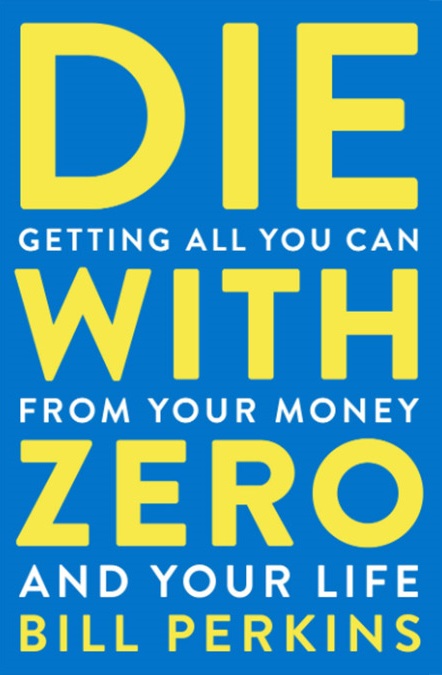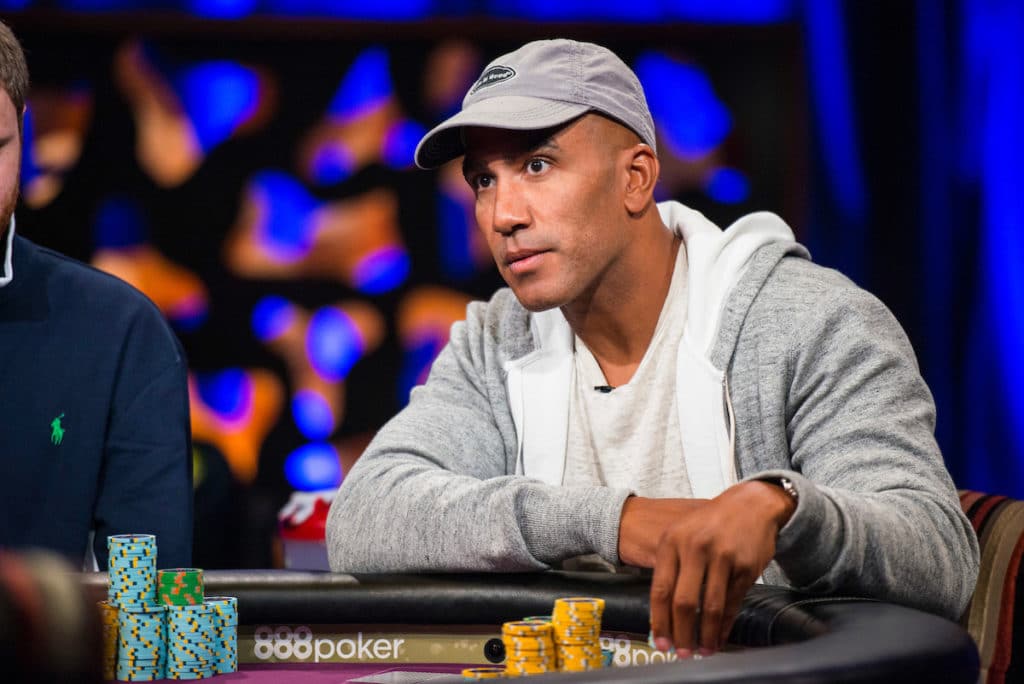We all want to live the best life we can achieve. What is the purpose of money other than to move us closer to that goal? Bill Perkins has some interesting thoughts and advice on how we can use our money to pursue an unforgettable life, and Die With Zero is one of my favorite nonfiction books of all time.

Bill Perkins is an extremely wealthy, brash, high-stakes poker playing hedge fund manager. I’m a relatively frugal engineer who likes the idea of financial independence, so I didn’t expect to get much out of this book. Thankfully I was wrong, and it has greatly influenced my thinking on lifestyle design.

For anyone who wants a quick overview before reading on, I would say my top three takeaways are:
- Invest in remarkable experiences. They continue to pay you in the future through reminiscing, and will greatly affect how you’ll experience your older years.
- Think about what experiences you want to have at different ages and pursue them. Your health and the age of your children or parents won’t stay the same.
- Give the money you want to give to children and to charity long before you die, rather than letting the time and amount be determined for you.
In the rest of article, we’ll examine these concepts, along with a few others, and I’ll also go over some of things from the book that I don’t agree with.
One last note before diving in. This book is intended for people with some disposable income, or who could free some up. People living in poverty are probably already doing all they can. But if you have some power over how your money is spent, this book has some food for thought.
Big Ideas
1. Invest in Experiences

The biggest idea I took away from this book is thinking of your life experiences as part of your investment portfolio. Perkins portrays experiences as assets that pay a “memory dividend” over time. Not only do you enjoy an amazing backpacking trip through Europe when you take it, but every time you think about it or talk with friends about it afterwards, you experience a bit more joy from it.
In this framework, memorable experiences are appreciating assets that compound over time, whereas material purchases depreciate quickly. A new car loses monetary value quickly as you use it, and you also get more and more used to the car and your enjoyment of it decreases over time. This relatively quick acclimation to new material luxuries is called hedonic adaptation.
One conclusion resulting from this line of thinking is that you should invest in experiences early and often. Much like financial investing, time is a huge component in total portfolio growth. So the earlier you have those amazing experiences, the longer you will have to reminisce and enjoy them throughout your life, maximizing the earnings from your memory dividend.
This definitely interferes a bit with the power of investing your money early and giving it time to compound in the market, but Perkins makes the argument that remarkable experiences should not be ignored to maximize finances.
Not only will most of our incomes grow as we age, but our ability to enjoy cheap experiences also decreases. A backpacking trip in Europe eating ramen noodles and sleeping in hostels sounds amazing when you’re 20, but probably a little less so when you’re 40.
Lastly, memories are part of your retirement portfolio in the sense that, in large part, we retire on our memories. In old age, looking back on a life rich with extraordinary experiences will surely lead to a more relaxed and satisfying retirement, rather than feeling like you have cram in everything possible while you still can.
2. Time Bucketing
If you’re convinced experiences are worth the money and effort to invest in, how do we know what we want to do and when? Perkins introduces the idea of “time bucketing”, and I think it’s a good one.
Make a list of experiences you’d like to have in your 30’s, in your 40’s, in your 50’s, etc. You want to go on ski trips all over the western US? Would that be best done in your 40s or 60s? You want a big blowout relaxing vacation with your parents and kids? When is the best age of both parents and kids to enjoy that? Or if you want to see all the national parks or go on a Hawaiian cruise? Those might be fine in your 60s or 70s.
This provides context, so when it’s time to spend a little bit more than you’re comfortable with (but that you can afford of course) on an experience, you can do so at peace, knowing now is the right time.
When making these decisions, money, time, and health are all important factors to consider, and Perkins gives a framework for thinking about these three variables. In general, your different seasons of life only give you two of these three at a time.
When you’re young, you typically are rich in time and health, but have less money. It can make sense to work hard, take risks, and enjoy cheap experiences.
In middle age, you typical have a decent income and good health, but little time. It might make sense here to buy back some of your time so that you can enjoy life more and have time for rich experiences.
In old age you typically have a lot of time, hopefully have a good amount of money, and at some point will have less health than ever before. This just emphasizes the fact that it makes sense to prioritize your health in ALL phases of life, and also not to delay all our best experiences until older age.
Common Objections
1. Running out of Money Early

This idea of “dying with zero” typically makes people uncomfortable at first. While the title is a bit extreme and certainly catchy, Perkins isn’t totally deluded. He knows that literally dying with zero money is impossible, but thinks it’s a worthy goal to pursue with a bit of cushion. So how do we manage to keep from running out of money before we die?
The first is just to have enough money that you are comfortable with your risk profile. In my article on Financial Independence, I discuss the 4% rule, which is one common rule of thumb to know how much money is enough. But whatever your risk tolerance and preference, it’s important to know your number.
Use an actuarial calculator to estimate how long you will live, add ten years if you want to be conservative. Look up historical investment portfolio data on something like firecalc.com and choose assumptions you are comfortable with for investment returns and drawdown time period. Just don’t refuse to calculate anything and go in blind. We want to avoid using money as an excuse to defer life if you already have enough of the former.
Additionally, Perkins recommends looking into longevity annuities. I’m not very familiar with these financial products, so won’t offer thoughts on them. However my initial, non-expert reaction is that if I can meet the financial goals I have well before traditional retirement age, then I shouldn’t need them. If things don’t go as hoped by the time I’m 60 or so, I will look into these products.
2. Inheritance and Charity
Now for the most vehement objection. As Perkins puts it, “but what about the kids?!” I always found this topic interesting to think about even before having read this book.
What is the optimal amount of money to leave your kids? To me it seems clear that more is not always better. If you’ll indulge me in thinking about some extreme cases, we don’t need to look further than most of the well-known families with “generational wealth” to see several poorly adjusted and unhappy children.
I’ve always admired Warren Buffet’s answer to this question. He says he wants to give his heirs, “enough money so that they would feel they could do anything, but not so much that they could do nothing.”
Now let’s ask another question. When is the best time to leave your children an inheritance? On average, an inheritance is given to heirs when they’re around the age of 60. I don’t know about you, but I hope by the time I’m 60, that I don’t need an inheritance at all. So if your kids won’t even need it, what’s the point of working hard for extra years to achieve it?
I would probably conclude that 60 is later in my childrens’ lives than I prefer, and pretty much agree with Perkins’ opinion that somewhere in the range of 25-35 years of age would be the best time to receive a monetary gift. Hopefully by then my kids will have developed some skills with money, and they still have time to do Buffet’s “anything”.
Finally, Perkins discusses how your primary legacy to your children will not be monetary, but will rather be time spent with them and experiences together. If you agree and think about things through that lens, then working and saving longer than needed actually decreases their inheritance.
These considerations really changed how I think about leaving money to my children. I hope I’m wealthy enough to give them about 2-4 years of median American living expenses when they’re 30ish. To me that seems like a good “anything but not nothing” scenario.
Now just a quick word on charity. Perkins claims we should give the money we want to give to charity as soon as possible. They need money now and can make an impact with it now. If it was better to invest that money and let it grow before using it, presumably that’s what the charity would do.
Regardless, the main point is to be intentional with both the quantity and timing of your monetary gifts to heirs, charities, and anyone else. This control means you can treat that money like it’s not your own, and prioritize maximizing life experiences with the rest.
Things I Disagree With
Although this is one of my favorite nonfiction books of all time and had a significant impact on my thinking, I definitely disagree with a few things. Or at least I think there’s more nuance to the ideas.
First off, optimizing fun per dollar and creating cheap, fun experiences is a skill, and you have to practice it to be good at it. This is not in direct conflict with the book, but if you’re thinking of how to spend $5,000 in the way that best maximizes life experiences, you probably aren’t considering cheap potluck house parties, crafts at the library, or camping trips. But these fun low cost activities can add loads of value to your experience portfolio.
Secondly, having extra money can give you options and resilience. Again, there’s a point where too much is too much and you should know your number as discussed above. However, prioritizing savings early in life can give a cushion of money that allows you to weather challenging times or to take intriguing opportunities that have more risk or less pay.
Conclusion
This book presents concepts that are great for anyone to think about with regard to lifestyle design. However, I think it truly becomes useful once you have a significant gap between your earnings and spending, whether that’s through frugality or through higher income.
At that point, you can then take that excess, look at your life, and decide whether to devote a percentage of it toward maximizing experiences, while still stashing away savings for optionality down the road.
We could think of this as a well-diversified “portfolio”, consisting of both excess savings for optionality and investments in rich experiences. This book provides excellent guidance on how to approach those experience investments.